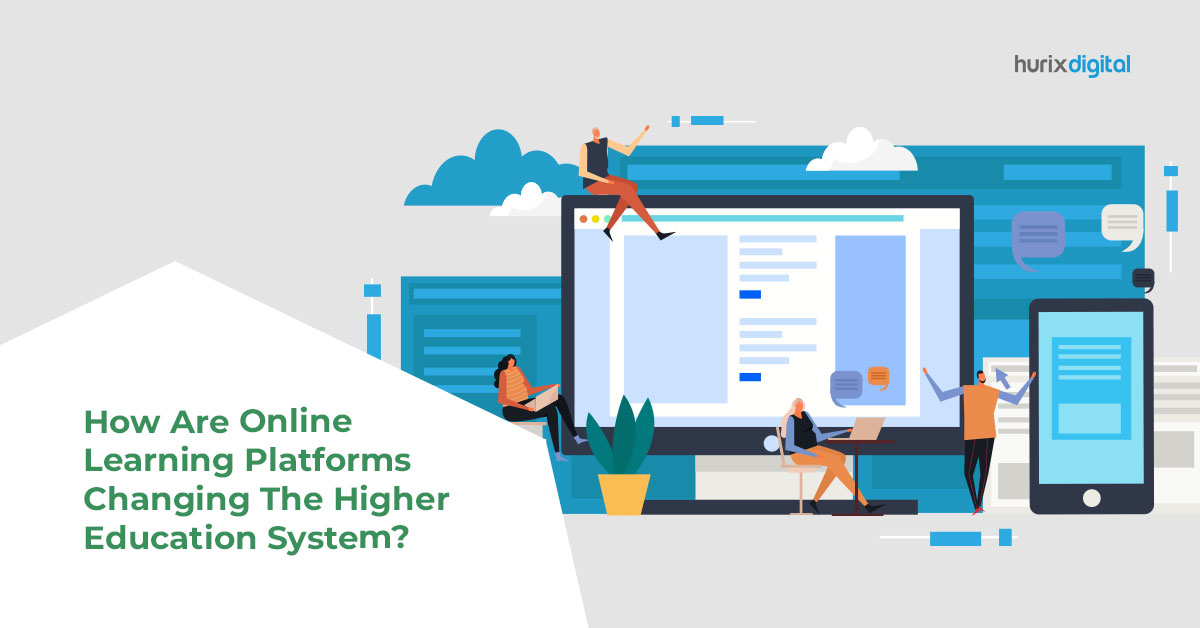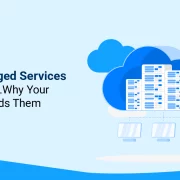
6 Best Innovations in Teaching and Learning Methods in 2024 and Beyond
The digitalization of education has led to numerous innovations in how we teach and learn. Education providers are creating and delivering content in a way that mirrors how individuals are organically choosing to learn.
Learners have always had diverse needs but were forced to learn through a one-size-fits-all approach. But today, eLearning has changed the game.
Learners are also opting to learn in different ways, such as consuming eBooks, attending online live instructor sessions, watching on-demand videos, or listening to audio representations.
The global e-learning market is projected to reach $840.11 billion in 2030, growing at a compound annual growth rate (CAGR) of 17.5%.
Let’s examine how innovative online learning platforms for higher education are leveraging innovations in eLearning to remove barriers and make learning more effective for millions of learners.
Table of Contents:
- Six Innovations in Teaching and Learning Methods
- Trends of Teaching and Learning Methods in 2025 and Beyond
- The Future of Education
- Conclusion
Six Innovations in Teaching and Learning Methods
Here is a snapshot of how the smart use of technology is revolutionizing the way we teach and learn:
1. Learning Through Interactivity
The adoption of eLearning is unlocking a whole new way of learning. Education providers can build interactivity into educational resources. The introduction of quizzes, problem-solving games, notes, and related links can encourage active learning experiences.
For instance, traditionally, the only way a student could learn Newton’s Laws of Motion was by attending a physical classroom where the teacher explained the concepts.
Today, students can watch animated videos that demonstrate the laws in action. They can also complete an online assignment to demonstrate what they learned and then take a quiz after the lesson to test their knowledge.
Hence, learning has become a much more engaging, visual, and addictive experience. Teachers become facilitators who nudge learners to the right resources, address more complex queries, and track student progress.
2. The Shift from Physical to eTextbooks
One of the most popular modern teaching approaches is the introduction of ePUB format eBooks, which enable many useful functionalities missing from paper books and PDF eBooks.
For instance, learners can jot down notes, communicate with teachers and other learners through highlights, and engage with multimedia elements such as videos, audio presentations, and infographics.
Hyperlinks to content located outside the scope of the eTextbook further connect the dots and expose students to related historic and real-time events and additional resources that enhance their understanding of a subject.
The eBooks market is expected to grow to $36.22 billion by 2034, with education among the top three verticals. The growing usage of mobile phones is a key driver of this trend.
3. Learning Skills Via Live Simulations
While it’s important for learners to build knowledge, it is just as important to build skills to be competitive in today’s work world.
One innovative way education providers are doing this is through true immersive learning. Educators design a live simulated environment where learners engage to solve problems.
For instance, learners can strengthen their coding skills in a live environment. Group simulations are also possible, enabling learners to build teamwork skills, which are in demand in the workplace.
4. Focus on Accessible Education
One of the biggest value-adds through eLearning is the ability to build accessible education for a wide spectrum of learners with diverse needs. Teachers, on their own, cannot provide accessible education to learners with diverse needs.
This is where cutting-edge digital publishing platforms enable course creators to design the same content in a way that makes it easy for special needs, mobility challenges, and geographical and language barriers to access with ease.
Simply put, learning is accessible to every learner in a way that is most relevant to them.
Here’s an example. If a learner has a hearing challenge, they can learn by watching videos with subtitles, consuming infographics, reading eBooks, and attending live instructor-led video conferences with caption capabilities, online.
However, in a physical classroom, they would need the help of a sign language interpreter to keep pace, as all sessions are instructor-led.
5. Higher Measurability of Learning Effectiveness
Data-driven learning is an important value-add of eLearning, especially when delivered with the right technology. Today, educators can review extensive data, which offers insights into learner habits, behavior, challenges, and limitations.
They can also customize dashboards and receive diverse data sets for a holistic understanding of learner effectiveness. They can determine whether or not resources are working and enhance curriculum and learning methodologies accordingly.
6. Leverage a Single, Unified Platform
One of the top contemporary educational technology trends is the introduction of a single, unified platform that enables all stakeholders – learners, teachers, and guest lecturers – to engage via one interface.
This approach helps educators streamline the entire teaching and learning process by enabling learners to access on-demand learning resources, attend live instructor-led sessions, collaborate and submit assignments, and track progress from one location.
On the other hand, education providers can share resources, host activities, and measure learning progress, from the same platform.
Also Read: 4 eLearning Trends for the Future of the Higher Education System in 2024
Trends of Teaching and Learning Methods in 2025 and Beyond
With the increased demand for personalized learning, diverse learner choices, technological advancements, and flexibility, the educational ecosphere must also evolve constantly.
In 2025, these innovations and changes will direct how you plan and oversee training programs for your employees. By adapting these advancements, you can ensure successful training sessions for both your learners and educators and work towards a holistic organizational goal.
1. Personalized and Adaptive Learning
Offering individualized learning experiences based on your learner’s requirements, skills, and preferences, personalized learning is quickly emerging as a key component of contemporary education.
Important attributes:
- Data-Driven Insights: Learning management systems (LMS) can enable you to spot learning gaps and provide focused assistance by monitoring learners’ progress and giving immediate feedback.
- Platforms for Adaptive Learning: These platforms modify the pace, content, and degree of difficulty based on the learner’s performance and involvement.
Learner autonomy increases the flexibility and accessibility of education by allowing students to select their learning paths, materials, and schedules.
Benefits:
- Heightened motivation and involvement.
- Enhanced learning results as a result of tailored assistance.
- Increased adaptability for working professionals and adult learners.
2. Immersive Learning with Virtual and Augmented Reality
You can transform traditional classrooms into immersive learning environments that improve comprehension and engagement through the use of virtual reality (VR) and augmented reality (AR).
Applications in Education:
- STEM Subjects: Students can investigate scientific ideas in 3D surroundings and carry out virtual experiments.
- Medical Training: Medical students can rehearse surgeries and diagnostic procedures using virtual reality simulations in a risk-free environment.
- History and Geography: Augmented reality applications allow learners to tour historical locations and learn about other civilizations digitally.
Benefits
- Improved comprehension and memory of difficult ideas.
- Experiential learning opportunities are free from physical limitations.
- Enhanced involvement of students thanks to interactive materials.
3. Gamification of Learning
Gamification entails incorporating game features like challenges, leaderboards, badges and points into instructional materials to make learning more dynamic and interesting for learners and employees.
Important components:
- Points and incentives: When learners do assignments, tests, and tasks, they receive points and incentives.
- Leaderboards: Learners are encouraged to achieve better by healthy peer rivalry.
- Challenges and Quests: Learning becomes easier and more pleasurable when difficult subjects are divided into smaller assignments or quests.
Benefits:
- Include heightened engagement and motivation.
- Enhanced retention as a result of active learning.
- Improvement of critical thinking and problem-solving abilities.
The Future of Education
eLearning is no doubt the future of education. However, it is important to design courses and content in such a way that is effective and not overwhelming for learners.
At times, education providers can overtly focus on bringing elements like gamification, multimedia content, virtual reality simulations, and other interactive pillars to content while losing sight of learning effectiveness.
This is where measuring learning effectiveness and making data-driven content development and distribution decisions are key to the success of contemporary eLearning.
Also Read: Making Math Books Accessible: Tips and Tricks for InDesign Designers
Conclusion
Smart technology usage can help education providers and online learning platforms for higher education upgrade their teaching and learning methodologies. One of the best approaches is to partner with a seasoned digital technology specialist to set up the infrastructure and tools to transform learning outcomes.
Access to such a framework creates more bandwidth for educators who can play a deeper role in learning facilitation, innovative pedagogy, and tracking learner progress.
Are you a K12 education provider from schools, universities, or online course platforms? If you are looking to increase learning effectiveness through the smart use of technology, partner with Hurix Digital. We offer customized services designed to elevate online learning platforms for higher education.
Our team can help you understand the services you can use for the most innovative teaching and learning methods in 2025!

Senior Vice President – Business Development
Over 25 years of experience in the edtech and workforce learning industry with strong skills in Business Development, Customer Relationship Management (CRM) and Strategy.







